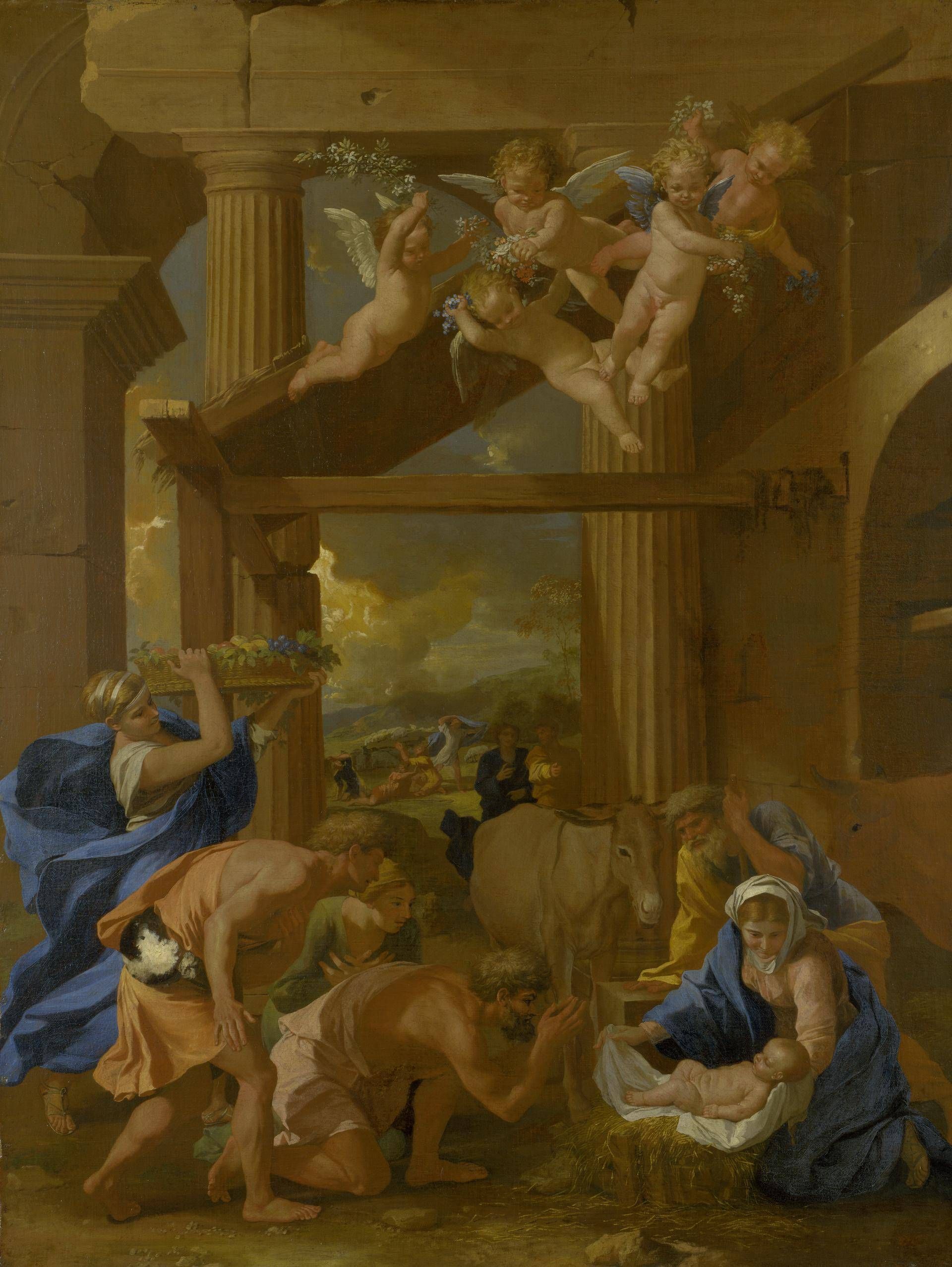
The Adoration of the Shepherds
Shepherds kneel and stand in order to praise the baby Jesus, watched by Joseph and the Virgin Mary (Luke 2: 15-16). The stone archway frames an earlier episode: the same shepherds fall over in surprise as an angel appear in the clouds to announce Christ's birth to them (Luke 2: 8-14).
Following an old tradition in painting, Poussin includes both parts of the story and paints them as if they are happening at the same time. The architecture separates the foreground scene from the activity in the background. The stable is built within the ruins of a classical building with columns that frame the scene, symbolising the collapse of paganism and the triumph of Christianity.
The shepherds and women eagerly await their turn to meet the baby Jesus. Their poses and gestures reveal their excitement: one shepherd prays while another moves towards him and is about to kneel, and a woman holds her hands against her chest. Behind them, two men point towards the foreground scene.
A young lady enters the scene carrying a 'birth tray' of fruits as a present to the new mother - these were popular in Italy, and appear in Renaissance paintings of the Nativity. She hurries forwards, her flamboyant drapery billowing behind her as she moves. Its vivid blue, and that of Mary's clothing, stands out against the men's ruddy skin and the copper stone of the buildings. Poussin's interest in classical antiquity is clear in the rigid drapery folds and the shepherds' muscular appearance, which are based on ancient statues. This scene includes many intricate details: Christ's straw bed, the cherubs' flowers and each feather of their wings, and a variety of fruit.
This subject was painted frequently during the seventeenth century. The National Gallery owns several examples by the Le Nain Brothers, Barent Fabritius, Giovanni Baptista Spinelli and Guido Reni.
Credit: Bought with a special grant and contribution from the Art Fund, 1957
c. 1633-4
Oil on canvas
97.2 x 74.0 cm
NG6277
Image and text © The National Gallery, London, 2025
Where you'll find this

Permanent collection




